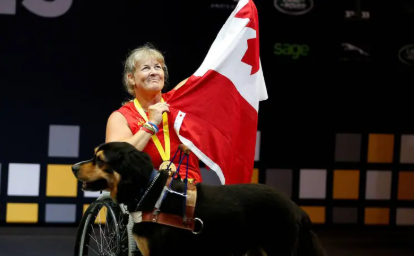Restrictions implemented for indoor performances;
Choir students must refind footing
November 16, 2021
“My favorite moment was after I turned the mic on, which I forgot to do, I just let loose. The first time I belted a little bit, I closed my eyes.” reminisces junior Julia Eakes.
She recalls that they had “practiced it so many times,” so it was “awesome to finally do it on stage for actual people in an audience.”
Junior Ethan Jourdan says that throughout the school year, the choir has been preparing for their concert via “constant repetition mainly in class,” as well as “practice with [their] vocal parts, and then, if [they] needed to, with rehearsal tracks, [they] would go back and go over certain areas of the piece.”
Senior Julia Harris adds that small groups of them would also “come together during homeroom” or “after school” to work together. During this time, the senior states, the groups would ensure that they could “sing all the parts together, not just individually.”
The junior describes one of the biggest restrictions to be “masks,” which can “kind of hinder how the audience and [all of us] hear each other.” Jourdan mentions the “spacing with the people who went to the concert kind of messes with the overall turnout for the concert.” Senior Lexi Wood agrees that this was a major issue with this performance.
Senior Patrick Barker describes that there were a lot of distractions that affected the singer’s performance. He says that they “struggled a lot with keeping focus and trying to keep quiet.”
Harris believes that this might be due to the past year’s abnormalities. She notes the precedent of needing to “use a microphone because of the masks,” despite being an a cappella group. However, they “had to make an exception this year.”
Another key aspect of preparing for their first in-person concert of the school year, notes Woods, was “[working] in sectionals,” which means that “the sopranos would work together, the altos would work together, and then the tenors and basses would all work together.”
The first and, according to Hoffman Academy, most helpful pattern of music the choir learns is “solfege,” announces Barker. The senior mentions that once the different choirs get “comfortable with the solfege,” they would then “go into lyrics and try to get those parts down extremely tight.”
With the help of the solfege, Wood says that each section would be able to get down their parts individually, then they would collectively “put [their] pieces together to harmonize.”
When compared to concerts of previous years, the members of harmonics agreed that this one contrasted greatly. Harris comments on a dominant difference, which is the new choir director, Katelyn Hemling.
The senior says that this is their “first time actually having her in the building [and] performing with her, so it is like a different teaching style at some points,” but she adamantly says that the teacher is “doing great.”
Wood expresses that there was no women’s choir present at the fall concert due to the return from COVID. According to the senior, it was “a much slower learning process because [they] haven’t had a concert in 2 years.” To accommodate this, it was decided that “instead of the beginning choir performing with [the advanced choir] in October,” they would wait until December.
She alleges that it has also been “a little hard bonding with
COVID.” Normally, Wood says, they would “have a choir bonfire or some type of outside of school event to bond,” but due to restrictions, they haven’t been able to.
















